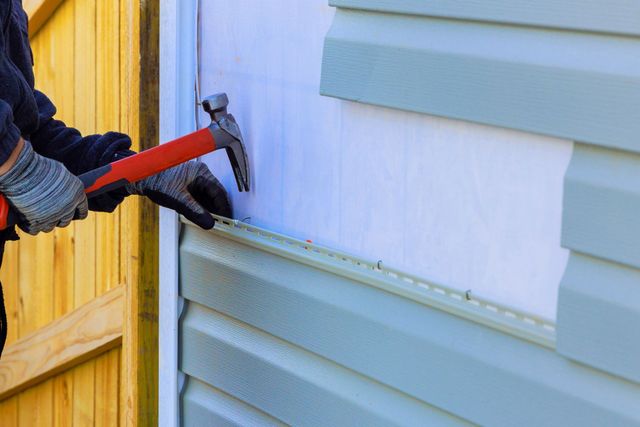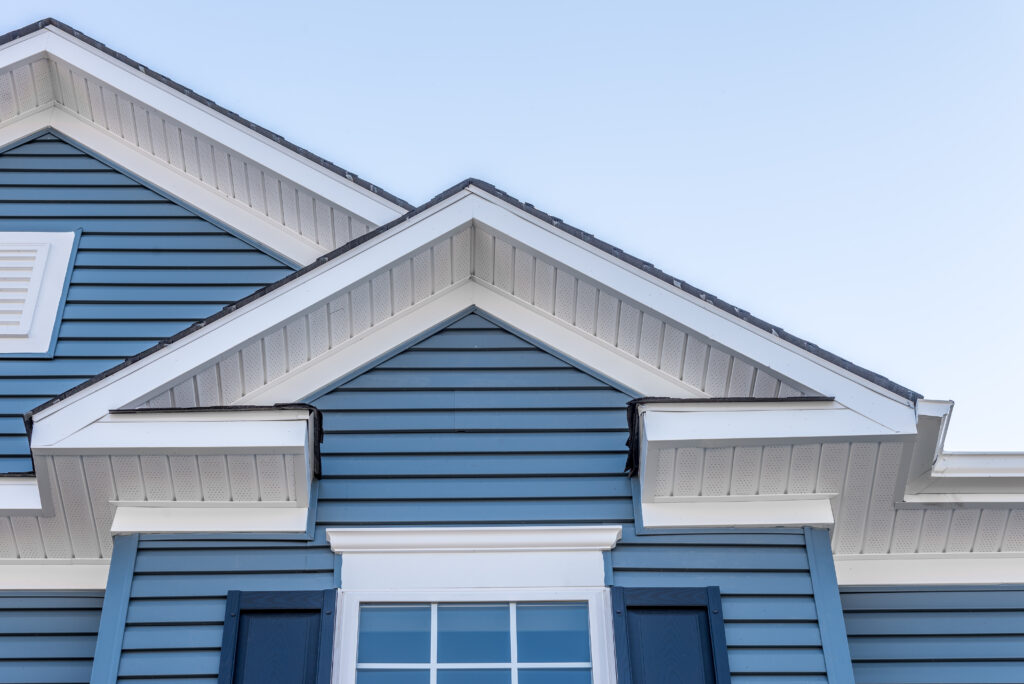The Vital Overview to the Various Types of House Siding and Their Special Advantages
In the world of home renovation, picking the ideal house siding is an essential decision that affects both visual appeal and useful performance. With so many choices to think about, which house siding product really stands out for your particular project?
Timber Exterior Siding
Wood house siding, a prominent selection for residential outsides, offers a timeless visual that combines all-natural appeal with structural honesty. This siding material is available in various styles, including clapboard, roof shingles, and board-and-batten, allowing house owners to tailor their appearance to match their style choices. Wood siding is commonly crafted from resilient species such as cedar, redwood, or yearn, which are recognized for their resilience and ability to stand up to ecological stressors.
Among the key benefits of wood siding is its exceptional insulation residential or commercial properties, which can add to energy efficiency and lower heating prices. In addition, timber exterior siding is naturally degradable, making it an eco friendly choice when sourced sustainably. Normal upkeep, consisting of painting or discoloration, can extend its life-span and enhance its look, enabling house owners to preserve the natural beauty of the wood.
Nonetheless, potential disadvantages consist of sensitivity to parasites, rot, and climate damages, requiring appropriate treatment and upkeep - morris siding contractor. Despite these problems, when correctly cared for, timber house siding can supply a attractive and durable option that enhances the character of a home while providing a warm, welcoming ambience

Vinyl Exterior Siding
Vinyl exterior siding has actually arised as a leading choice for homeowners seeking a low-maintenance outside choice that combines resilience and affordability. This flexible material is crafted from polyvinyl chloride (PVC), making it resistant to numerous weather, consisting of moisture and UV rays. Because of this, plastic siding does not warp, rot, or discolor, making sure durable visual charm.
One of the primary benefits of vinyl siding is its considerable variety of styles and colors, allowing property owners to achieve the preferred look for their home without the need for constant repainting. Additionally, vinyl house siding is very easy to set up, which can substantially lower labor expenses throughout building or renovation tasks.
Plastic home siding also adds to energy effectiveness. Many choices feature insulation support, which improves thermal efficiency, aiding to preserve comfy interior temperatures and potentially reducing power bills. Its smooth surface area helps with easy cleansing, calling for only regular washing with a garden pipe to remove dirt and debris.
Fiber Cement Siding
Fiber cement house siding has actually obtained grip among contractors and property owners alike because of its exceptional mix of durability and aesthetic flexibility. Made up of a blend of cellulose, concrete, and sand fibers, this siding choice is crafted to hold up against severe weather, including high winds, heavy rainfall, and temperature changes, making it a long-lasting choice for property outsides.

Among the main benefits of fiber cement siding is its resistance to bugs, such as termites, and its non-combustible nature, offering enhanced fire safety. morris siding contractor. link In addition, it is offered in a wide array of appearances, designs, and colors, permitting home owners to attain their wanted visual without compromising efficiency
One more advantage is its reduced upkeep requirements; fiber concrete home siding commonly needs painting or staining every 5-10 years, which is less frequent than various other products. Furthermore, its durability contributes to a reduced overall expense of possession, as it decreases the need for constant repair work or replacements.
Inevitably, fiber concrete siding represents a superb financial investment for those looking for a resistant, eye-catching, and flexible outside choice, combining both form and feature to improve the home's curb allure.
Steel Home Siding
The allure of metal siding hinges on its robust longevity and modern aesthetic appeal, making it a popular selection for contemporary design. Readily available in products such as aluminum and steel, metal house siding offers a series of finishes and shades, permitting home owners to attain a tailored appearance that matches their layout vision.

Energy effectiveness is one more significant benefit, as numerous steel home siding products are designed with insulation choices that assist manage indoor temperatures. This his explanation can lead to minimized power expenses gradually. In addition, metal exterior siding is frequently recyclable, making it an ecologically pleasant option for sustainability-minded home owners.
The installation process for metal house siding can be fairly straightforward, leading to a quicker turnaround time for construction projects. Generally, metal exterior siding integrates capability and style, making it a functional option for those seeking a visually attractive and long-lasting outside coating.
Brick and Rock Exterior Siding
Brick and stone siding stands apart as an ageless selection that enhances the aesthetic charm of any kind of home. Recognized for their durability and low upkeep, these materials give an extraordinary return on investment while boosting the building's visual charm. Offered in numerous colors, appearances, and patterns, brick and rock can be customized to fit varied architectural styles, from typical to modern-day.
One of the main advantages of brick and rock siding is their energy performance. Both products possess natural insulating residential or commercial properties that aid control indoor temperatures, possibly minimizing home heating and cooling prices. Additionally, they use premium fire resistance compared to various other house siding alternatives, contributing to enhanced safety.
One more benefit is their longevity. Block and rock can last for years, frequently requiring very little maintenance past occasional cleansing. Unlike wood exterior siding, they are impervious to bugs and rot, making certain a lasting exterior that holds up against the aspects.
Verdict
In summary, the selection of home siding significantly impacts a home's visual appeal, energy effectiveness, and maintenance demands. Each type of exterior siding-- whether timber, plastic, fiber cement, brick, or steel and rock-- uses one-of-a-kind advantages customized to different homeowner preferences and environmental problems.
One of the main benefits of timber home siding is its superb insulation homes, which can contribute to power performance and reduced home heating expenses. In addition, wood house siding is biodegradable, making it an eco pleasant choice when sourced sustainably.One of the main advantages of steel home siding is its resistance to numerous ecological aspects.Energy efficiency additional resources is one more significant benefit, as several metal siding items are designed with insulation choices that help regulate indoor temperatures. Each type of house siding-- whether wood, vinyl, fiber brick, cement, or metal and rock-- provides distinct benefits tailored to numerous homeowner choices and ecological problems.